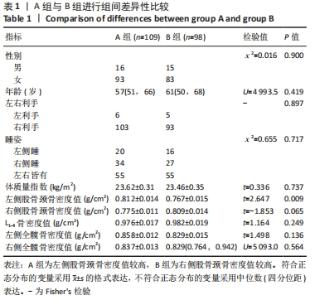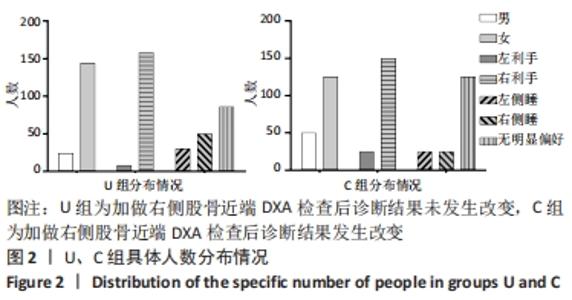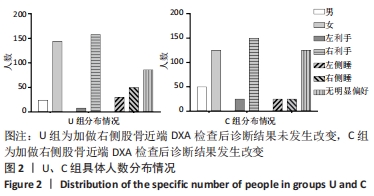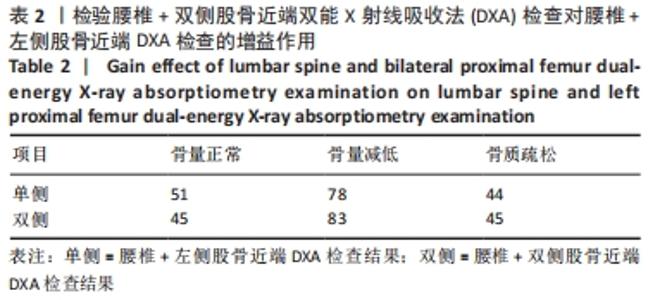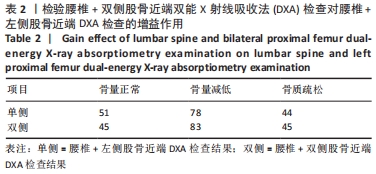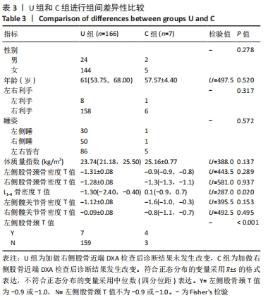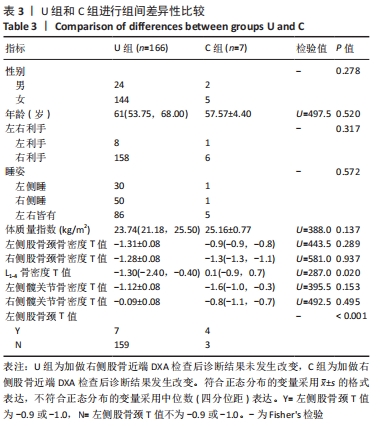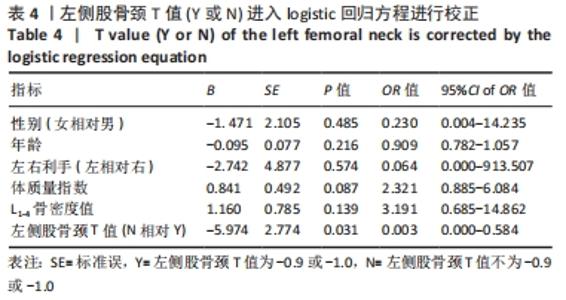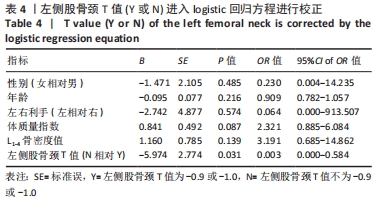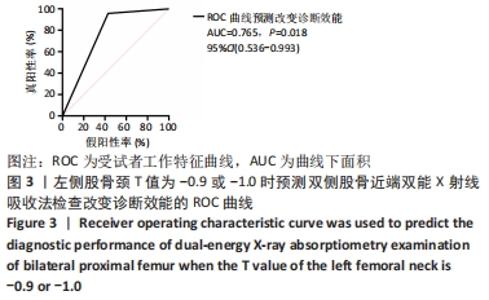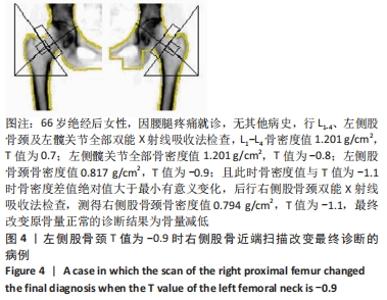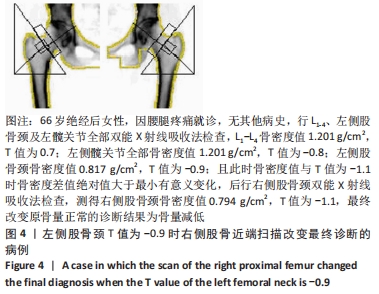[1] 国家统计局,国务院人口普查领导小组.第七次全国人口普查公告(第五号)[Z].国家统计局官方网站. http://www.stats.gov.cn/tjsj/tjgb/rkpcgb/qgrkpcgb/202106/t20210628_1 818824.html.
[2] 邱敏丽, 谢雅, 王晓红, 等.骨质疏松症患者实践指南[J].中华内科杂志,2020,59(12):953-959.
[3] 李兴国, 邓叶龙, 刘朝晖, 等. 中国老年髋部骨折流行性病学特征分析[J].实用骨科杂志,2021,27(7):601-606.
[4] 高飞飞, 杜斌, 刘锌, 等. 介孔材料促进骨修复的优势[J].中国组织工程研究,2022,26(21):3401-3409.
[5] LAI EC, LIN TC, LANGE JL, et al. Effectiveness of denosumab for fracture prevention in real-world postmenopausal women with osteoporosis: a retrospective cohort study. Osteoporos Int. 2022. doi: 10.1007/s00198-021-06291-w.
[6] 刘晓辉, 秦璇, 杜静, 等. 伊班膦酸钠联合骨髓间充质干细胞干预治疗骨质疏松动物的骨组织生物力学性能研究[J]. 北京生物医学工程,2022,41(3):280-285.
[7] 基层医疗机构骨质疏松症诊断和治疗专家共识(2021[J]).中国骨质疏松杂志,2021,27(7):937-944.
[8] BIJELIC R, MILICEVIC S, BALABAN J. Risk Factors for Osteoporosis in Postmenopausal Women. Med Arch. 2017;71(1):25-28.
[9] WOO SH, PARK KS, CHOI IS, et al. Sequential Bilateral Hip Fractures in Elderly Patients. Hip Pelvis. 2020;32(2):99-104.
[10] DESAPRI KT, BROOK R. To scan or not to scan? DXA in postmenopausal women. Cleve Clin J Med. 2020;87(4):205-210.
[11] 黄禾, 陈跃. 云克联合钙剂和维生素D_3治疗类风湿关节炎骨质疏松的疗效观察[J].中华核医学与分子影像杂志,2018,38(9):615-618.
[12] ANTONIADES L, MACGREGOR AJ, MATSON M, et al. A cotwin control study of the relationship between hip osteoarthritis and bone mineral density. Arthritis Rheum. 2000;43(7):1450-1455.
[13] 马远征, 王以朋, 刘强, 等. 中国老年骨质疏松症诊疗指南(2018)[J].中国骨质疏松杂志,2018,24(12):1541-1567.
[14] YANG RS, CHIENG PU, TSAI KS, et al. Symmetry of bone mineral density in the hips is not affected by age. Nucl Med Commun. 1996;17(8):711-716.
[15] RAO AD, REDDY S, RAO DS. Is there a difference between right and left femoral bone density? J Clin Densitom. 2000;3(1):57-61.
[16] 郭郡浩, 赵智明, 蔡辉. 人体双髋骨密度分布规律研究[J].中国骨质疏松杂志,2009,15(12):897-900.
[17] PETLEY GW, TAYLOR PA, MURRILLS AJ, et al. An investigation of the diagnostic value of bilateral femoral neck bone mineral density measurements. Osteop Int. 2000;11(8):675-679.
[18] 夏维波, 章振林, 林华, 等. 原发性骨质疏松症诊疗指南(2017)[J].中国骨质疏松杂志,2019,25(3):281-309.
[19] DALY RM, DALLA VIA J, DUCKHAM RL, et al. Exercise for the prevention of osteoporosis in postmenopausal women: an evidence-based guide to the optimal prescription. Braz J Phys Ther. 2019;23(2):170-180.
[20] CAMACHO PM, PETAK SM, BINKLEY N, et al. American association of clinical endocrinologists/american college of endocrinology clinical practice guidelines for the diagnosis and treatment of postmenopausal osteoporosis-2020 update. Endocrine Pract. 2020;26(Suppl 1):1-46.
[21] ROSSI LMM, COPES RM, DAL OSTO LC, et al. Factors related with osteoporosis treatment in postmenopausal women. Medicine (Baltimore). 2018;97(28):e11524.
[22] AMORIM DMR, SAKANE EN, MAEDA SS, et al. New technology REMS for bone evaluation compared to DXA in adult women for the osteoporosis diagnosis: a real-life experience. Arch Osteoporos. 2021;16(1):175.
[23] SCHOUSBOE JT, RIEKKINEN O, KARJALAINEN J. Prediction of hip osteoporosis by DXA using a novel pulse-echo ultrasound device. Osteoporos Int. 2017;28(1):85-93.
[24] CHAI H, GE J, LI L, et al. Hypertension is associated with osteoporosis: a case-control study in Chinese postmenopausal women. BMC Musculoskelet Disord. 2021;22(1):253.
[25] YANG S, LESLIE WD, LUO Y, et al. Automated DXA-based finite element analysis for hip fracture risk stratification: a cross-sectional study. Osteoporos Int. 2018;29(1):191-200.
[26] KANIS JA, COOPER C, RIZZOLI R, et al. European guidance for the diagnosis and management of osteoporosis in postmenopausal women. Osteoporos Int. 2019;30(1):3-44.
[27] 弓健, 吴秋莲, 徐浩. 广州地区双侧股骨近端双能X射线吸收法测量骨密度1055名的临床价值[J].中国组织工程研究与临床康复, 2007,11(2):366-368+371.
[28] 刘晓建, 王猛, 刘杰, 等. 右侧股骨近端骨密度测量价值的探讨[J].中日友好医院学报,2014,28(6):347-349.
[29] IKEGAMI S, KAMIMURA M, UCHIYAMA S, et al. Unilateral vs bilateral hip bone mineral density measurement for the diagnosis of osteoporosis. J Clin Densitom. 2014;17(1):84-90.
|
